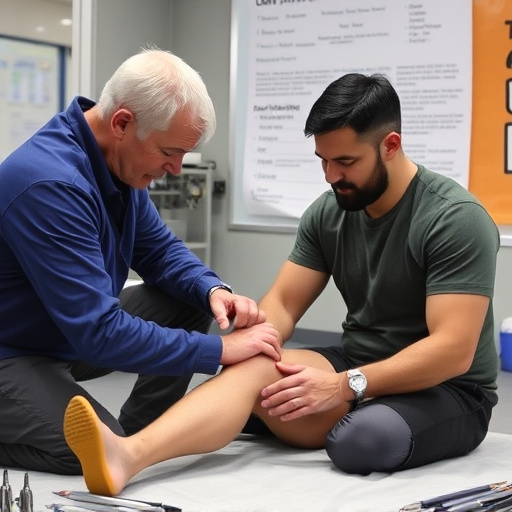Federal injury claims require filing a detailed claim with supporting documentation for injuries like motor vehicle accidents, slips and falls, or medical malpractice. Evaluating these claims involves strict guidelines based on evidence, including medical records detailing impact on daily life. Accepted claims offer compensation, medical coverage, and pain relief; denied claims necessitate appealing with legal assistance to protect rights and access justice.
Navigating the complexities of federal injury claims can be daunting. This guide breaks down the key differences between accepted and denied claims, offering crucial insights into the process, criteria, and appeals rights. Understanding these nuances is essential for anyone seeking compensation for injuries sustained due to government actions. From initial submission to final decisions, this article equips you with the knowledge to advocate effectively for your federal injury claim.
- Understanding Federal Injury Claims Process
- Criteria for Acceptance vs Denial of Claims
- Rights and Appeals After Claim Decision
Understanding Federal Injury Claims Process

The federal injury claims process involves several key steps that are critical to navigating when seeking compensation for injuries sustained due to government negligence or workplace accidents. It begins with filing a claim with the appropriate federal agency, detailing the circumstances of the injury and the damages incurred. This initial step is crucial as it triggers an investigation and sets the stage for further proceedings. Once the claim is accepted, the claimant may be entitled to various forms of relief, including medical expenses, lost wages, and pain and suffering.
A significant aspect of federal injury claims involves understanding the types of injuries that are covered and the evidence required to support the claim. Common types of injuries that fall under federal jurisdiction include those sustained in motor vehicle accidents, slips and falls on government property, or injuries resulting from medical malpractice involving federal facilities. In cases where chiropractic treatment, sports injury treatment, or post-accident rehabilitation is necessary, these expenses can be included as part of the claim if they are directly related to the accident or injury. Proper documentation and medical records are essential to substantiate these claims and ensure a fair outcome.
Criteria for Acceptance vs Denial of Claims

When evaluating federal injury claims, whether a claim is accepted or denied largely hinges on the criteria set by the governing bodies and the specific details of each case. For a federal injury claim to be accepted, it must meet several stringent requirements. These include clear evidence of the injury, proof that the injury was caused by an eligible event or condition (such as automobile accidents, workplace incidents, or conditions related to military service), and adherence to reporting timelines. Additionally, the extent of the injury’s impact on daily life, employment capacity, or need for specialized treatments like sciatica relief through spinal adjustments or whiplash treatment plays a significant role in acceptance decisions.
In contrast, a denied claim suggests that the evidence presented falls short of meeting these criteria. This could be due to insufficient documentation, failure to establish a direct causal link between the injury and the alleged incident, or lack of proof regarding the severity of the impact on daily functioning. For instance, if a claimant seeks compensation for whiplash treatment without providing adequate medical records or failing to demonstrate how the condition affects their ability to work or engage in everyday activities, the claim is more likely to be denied. Understanding these criteria is crucial for anyone navigating the federal injury claims process, ensuring that all necessary steps are taken to present a compelling case.
Rights and Appeals After Claim Decision

After a federal injury claim is either accepted or denied, individuals have specific rights and options to consider. If your claim is accepted, it’s important to understand the benefits you’re entitled to, such as medical coverage, compensation for lost wages, and pain and suffering allowances. This can include access to quality healthcare services, including physical therapy, tailored to address any soft tissue injuries or chronic pain relief needs. The process of receiving these benefits and managing your case with the responsible federal agency is crucial to ensuring you receive the support needed during your recovery.
In the event that a claim is denied, appealing the decision becomes an essential step. This appeals process allows claimants to present additional evidence or argue against the initial determination. Legal assistance can be invaluable here, guiding individuals through complex regulations and ensuring their rights are protected. Accessing justice and securing the compensation you deserve for federal injury claims is possible with the right support, even in cases of denial.
When navigating the complexities of federal injury claims, understanding the clear distinctions between accepted and denied cases is crucial. By familiarizing oneself with the evaluation criteria and subsequent appeal processes, individuals can better advocate for their rights. Whether a claim is accepted or denied, knowledge empowers those affected to make informed decisions and explore options to resolve their federal injury claims effectively.














